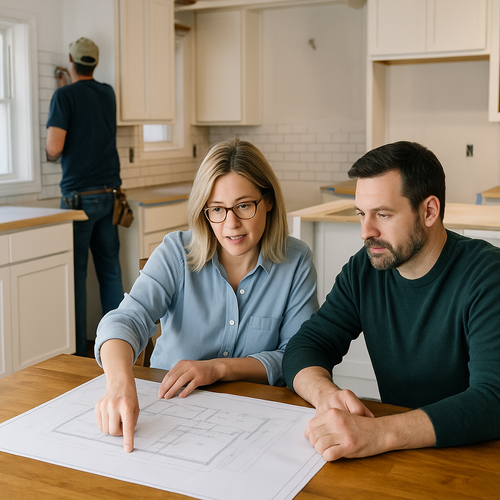Imagine walking into your home after work. Your dad is in the kitchen teaching your daughter how to cook his signature dish. Your mom is watering plants out on the patio. Upstairs, your brother is finishing a Zoom meeting in his home office.
It may sound chaotic, but for millions of Americans, multigenerational living is becoming the new normal. And it turns out, they love it.
According to a new report from Berkshire Hathaway HomeServices, backed by Warren Buffett’s legendary market instincts, multigenerational housing is one of the fastest-growing real estate trends of 2025.
Let’s break down why it’s gaining so much momentum and how it can impact your real estate decisions in today’s market.
Why Multigenerational Homes Are in High Demand in 2025
In 2010, roughly 5.1 million U.S. households were multigenerational. By 2020, that number jumped to 6 million. Today, more than 59 million Americans live in homes with multiple adult generations, and that number is rising quickly.
The reasons behind the trend are both financial and practical:
Affordable housing is harder to find. Many younger buyers are earning less than their parents did at the same age, while home prices and mortgage rates continue to rise.
Senior care is expensive. Aging parents want to remain independent, but assisted living and retirement communities aren’t always financially feasible.
Childcare costs are through the roof. Families with young children are leaning on grandparents for help and saving thousands per year as a result.
Remote work makes co-living easier. With flexible work-from-home options, multiple generations can share space without sacrificing work-life balance.
More than just a money-saving strategy, multigenerational living is about shared support, deeper connection, and long-term flexibility.
What Buyers Want in a Multigenerational Home
If you're buying a home for multigenerational living in the Triangle area, you’re not alone. Buyers are actively looking for homes with flexible layouts that offer both shared and private space.
Here are the top features in demand for multigenerational homebuyers in 2025:
Finished basements, in-law suites, or ADUs (accessory dwelling units) for private living areas
Secondary kitchens or kitchenettes to allow independent meal prep
Main-floor bedrooms and wide doorways for aging-in-place or accessibility
Separate entrances to create privacy for extended family or rental potential
Even homes not originally designed for multiple generations can be retrofitted or remodeled to meet these needs.
Selling? Highlight Multigenerational Potential
If you’re preparing to sell your home, now’s the time to think like a multigenerational buyer.
Homes that offer privacy, space, and flexibility often sell faster and for more money. Whether it’s a finished room over the garage, a basement with its own entrance, or simply a smart layout that supports separate living zones, showcasing your home’s adaptability is key.
Even if your home isn’t marketed as multigenerational, professional staging and targeted listing language can help potential buyers see the possibilities.
Investors: This Trend Is a Smart Bet
For real estate investors in the Triangle region, multigenerational housing is a growing opportunity.
According to Berkshire Hathaway, it’s a “goldmine for remodelers.” And they’re right. Converting garages, adding in-law suites, or building detached ADUs can increase rental value, attract long-term tenants, and create additional income streams.
If you're flipping properties or building new construction, consider layouts that support dual living, privacy, and universal design features. The demand is only going to grow.
Triangle Builders Are Catching On
Builders across the country - and right here in Raleigh, Durham, Chapel Hill and the surrounding area within the Triangle - are incorporating multigenerational floor plans into their new home communities.
These homes often include:
Private quarters for aging parents, adult children, or live-in caregivers
Shared kitchens and living areas with smart layouts for flexibility
Universal design features like no-step entries and walk-in showers
Energy-efficient upgrades that lower operating costs for large households
The focus is on function over flash - - -homes that actually reflect the way families live today.
The Future of Family Living Is Here
Multigenerational homes are more than a passing trend. They reflect how families are choosing to live - - - together, supporting one another, and building communities that are resilient and adaptable.
Whether you’re a buyer looking for a home that fits your extended family, a seller preparing to list your home, or an investor ready to tap into this growing niche, understanding this shift in the housing market can help you make smarter real estate decisions.
Ready to find or sell a multigenerational home in the Triangle? Let's talk about your goals and how to position your next move to get the most value, space, and flexibility for the future.
Thanks for reading!
Brandon Yopp



